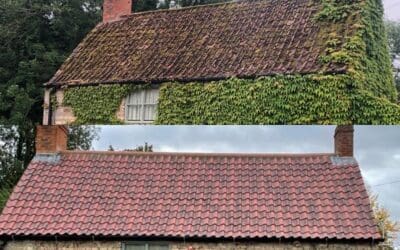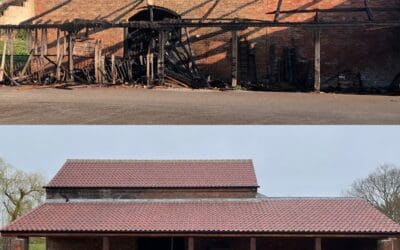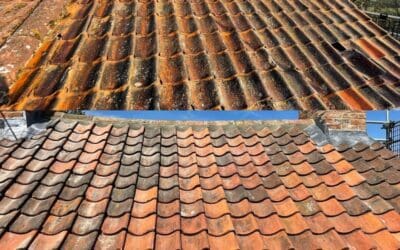Pantiles
Traditional Clay Pantiles
Clay Pantiles
Pantiles are different to other clay roof tiles because of their distinctive S shape. It is believed they originate from Holland.
The S shaped tiles were one of the first clay tiles to be put into production, starting around the 14-15th century, when use of fireproof products for building materials was ordained by the government. Clay pantiles were historically first seen in the 17th century around the eastern coast of England and Scotland. They were imported from Holland and were used as ballast on trading ships.
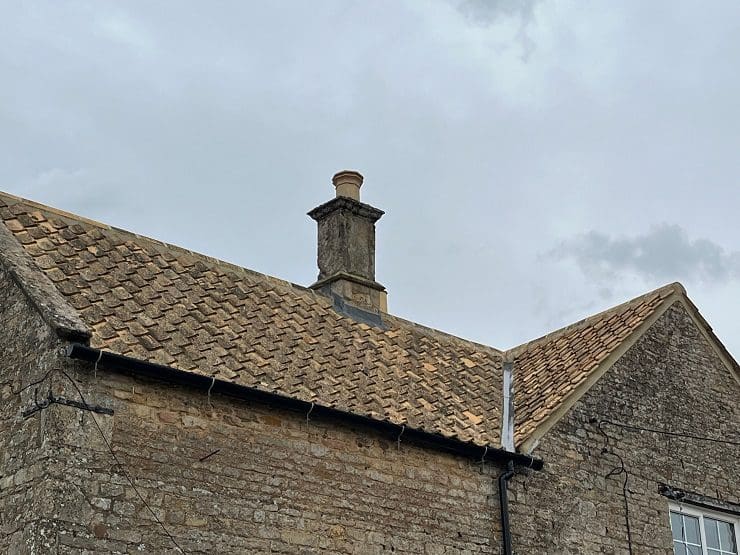
Traditional Clay Pantiles
Traditional clay pantiles have a warm orange-red colour, but are also seen in a yellow variety around certain areas near Little Bytham, and even blue-black around Bottesford, known as Bottesford Blue. However these do start their life as orange-red, tar is then applied and they are fired 3 times to give a protective glaze.
Heritage Roofing Services re-use pantiles wherever possible, when re-tiling a roof there are always some lost to weather, wind, moss growth and failure due to rotting timbers and fixings. We source the highest quality reclaimed tiles to complete the roof.
Pantiles are a lightweight roofing material and are often up to a third lighter than other roof tiles available.
New Pantiles
Where it is not possible to re-use a property’s existing pantiles, we will use new clay pantiles, called Arcadia pantiles, made by Sandtoft.
These Arcadia pantiles have been specifically developed by Sandtoft to give them the look and colour of a reclaimed pantile and are manufactured from high quality natural clay.
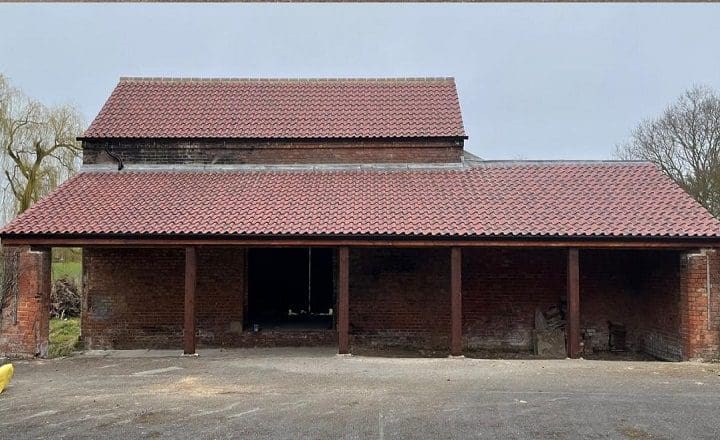
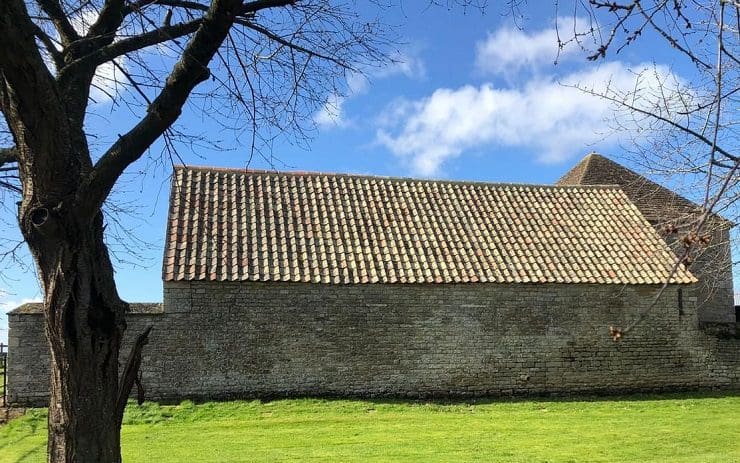
How are pantiles laid
- Traditional single clay pantiles are hung on battens, which are in turn attached to the rafters once new breathable membrane has been secured.
- The top right and bottom left corners of the pantiles have chamfered edges that are equal to the head lap and side lap (overlap) along with the nib and nail hole fixings which are moulded into the top edge of the tile.
- Pantiles are laid in neat rows, creating a pleasing, distinctive look – when laid correctly and skilfully. As you can imagine many roofs are not perfectly rectangular in shape!
- The roof is completed with traditional clay ridge – most commonly half round shape or V shaped, on a traditional lime mortar bed.
Traditionally, how are they made?
- Clay is beaten into a flat slab the size and shape of the mould by a tradesman known as a ‘rough moulder’
- The ‘skilled moulder’ then sanded his mould and secured it with pegs to its moulding table
- The clay slab was then pressed into the mould and neatened up by removing the excess clay with a tool known as a ‘strike’ or ‘harp’
- The mould itself was designed with a triangular piece of wood in the top right corner, and a larger curved section in the bottom left corner
- The flat tile was then transferred to a ‘washing frame’ which was a wooden template matching the curved form. Washing meant putting a wash or slope on the tiles shape
- The flat tile continued onto the washing frame and was beaten into shape with a tool known as a splayer
- When half dry the tile went to the ‘thwacking frame’ where it was beaten with a ‘thwacker’ or ‘beater’ which removed any warping that happened during the drying process
- When the pantile is fully dry it is ready to be fired in the kiln.
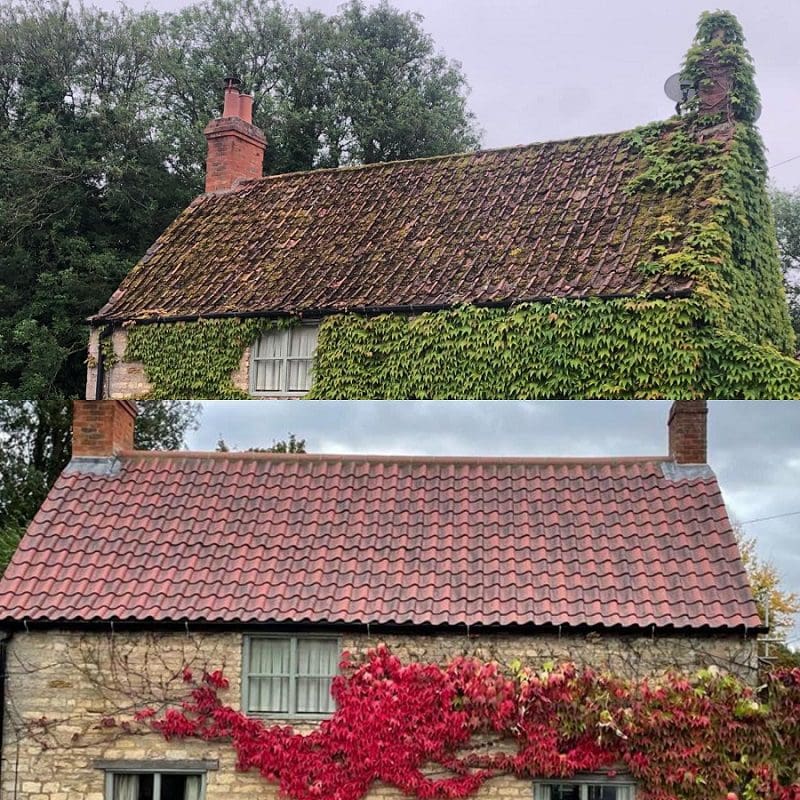
OUR SERVICES
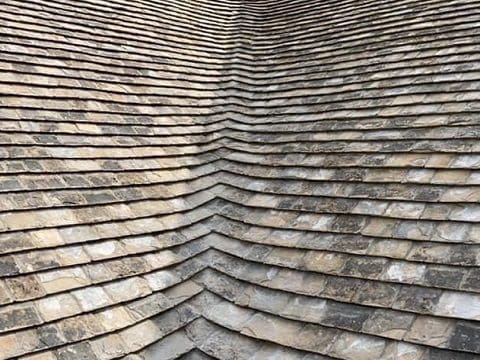
Collyweston Slate
Heritage Roofing Services use traditional methods for Collyweston Stone Slate roofing.
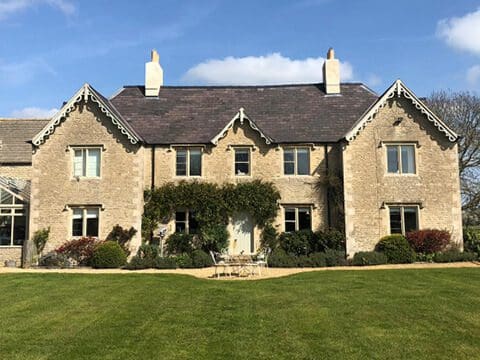
Blue Slate
We offer all services related to Blue Slate roofs, from re-slating to repairs and maintenance.
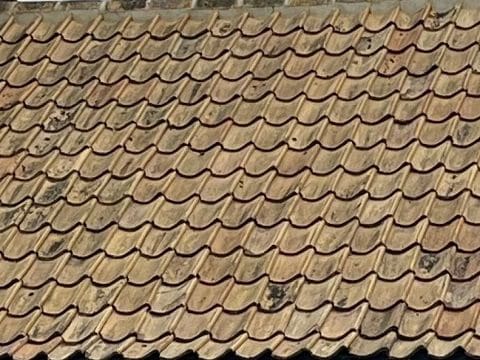
Pantiles
Traditional to the East of England, clay pantiles have been used for centuries.
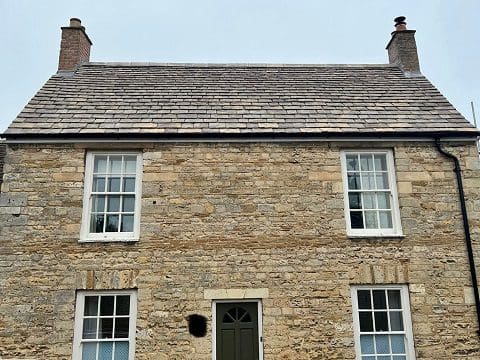
Bradstone Cotswold
Conservation Slates, closely resemble Collyweston in appearance
RECENT PROJECTS
Arcadia Pantiles South Witham
Arcadia Pantiles look stunning on this cottage in South Witham cottage The Arcadia pantile roof on this attractive cottage in South Wiham had reached the end of its natural life.Unfortunately, the existing pantiles couldn't be reused as they had worn out and perished...
Arcadia Pantile Roof Pinchbeck
Damaged by fire, this Pantile roof in Pinchbeck was restored to its former glory by the team at Heritage Roofing. This Grade II listed barn required extensive work following damage caused by fire. The wall plate was rebuilt to support the new roof structure, and the...
Reclaimed Pantiles Market Rasen
The pantile roof of the cottage, attached to a Grade I listed Water Mill, required a new set of reclaimed pantiles as the existing pantiles were too degraded/perished to be reused. The roof structure required strengthening using tanalised timbers and the roof...
